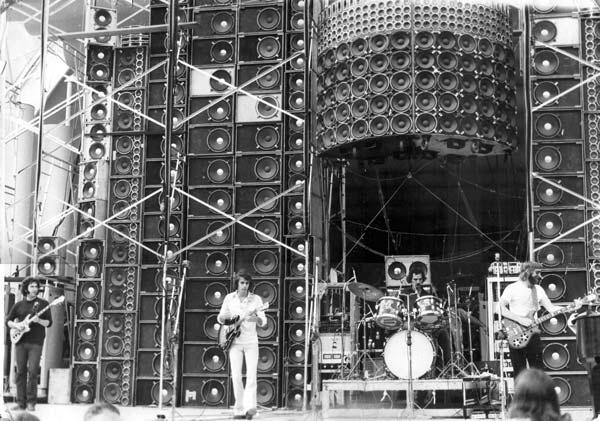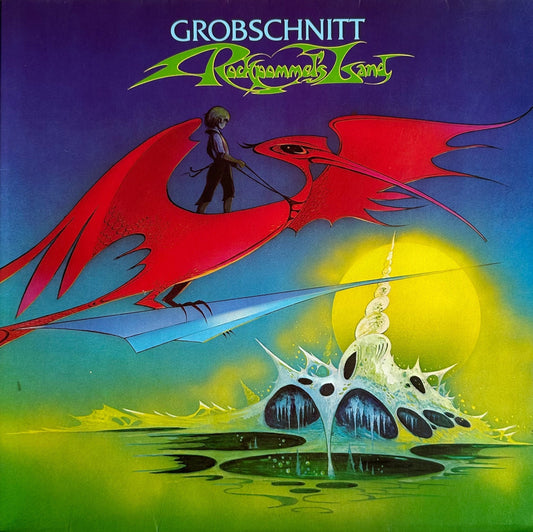In this new three-part series, you and I will explore the life and times of Owsley Stanley, who early on financed the Grateful Dead with money he made as a “cosmic chemist” and was instrumental in the design of the band’s legendary “Wall of Sound” stage system. “Bear,” as he came to be known, was a hoot and I have thoroughly enjoyed doing the research for this series. Hopefully I can relate that to you, dear reader.
The drug discussions will make some of you uncomfortable. However, talking about this time period without talking about drugs would be like describing the Old West without horses. Something’s always driving the times, man.
Owsley Stanley once stated that any retrospective of his life should not include mundane details such as birthplace, parentage, etc. I will only say he was born in 1935 to parents of bluegrass aristocracy, his grandfather being a well-known Kentucky politician, Augustus Owsley Stanley, for whom our boy was named. There was however nothing ordinary about our subject, and he detested the name Augustus because this nickname always morphed into “Gus.” So Stanley opted to legally change his name to just Owsley.
Nothing about Owsley would ever be normal. He taught himself to read by age two and a half reading comic books, and later related that he learned to read “more or less as a Chinese person would,” seeing words as if they were pictures. Because of this unorthodox method of self-teaching he really didn’t see letters as separate entities and struggled with the dictionary later on in life, since he saw letters as mere strokes and didn’t understand the relationships between them.
It is typical of a gifted child to have a hard time in school and Owsley was certainly gifted. Let’s face it, schools are designed to put people into boxes and this kid would resist boxes his entire life. Owsley’s mom had divorced his dad when he was eight and moved her small family from Virginia to live with her sister in Los Angeles. But young Stanley was so difficult she shipped him back to his dad when he was 11. How a kid can get into that much trouble by the time he was 11 that his mother would ship him cross-country to a dad who had re-married and started another family is hard to imagine.
Owsley was hardly repentant. He now had a step brother who he said he treated “like dog sh*t…I was being dumped on and so I dumped on him.” In order to instill discipline his father enrolled him in Charlotte Hall Military Academy. We can imagine how well that worked and in fact he was tossed, and not because of his grades since he was a top student. The headmaster remembered him and described Owsley as a brainchild, a wunderkind. Officially Stanley was expelled because he smuggled alcohol into the school and got the entire student body blasted on homecoming weekend. This is remarkable for two reasons. One, he was in the ninth grade and small in stature so how he was able to do this remains a mystery. And B, this was the guy that would eventually be influential in turning on an entire generation.
After a short stint back home the dear family sent him as a voluntary patient to St. Elizabeth’s Hospital, a psychiatric institution in Washington, DC. That he was willing to go tells the tale of life in the Stanley home. Owsley’s dad was a raging alcoholic (maybe the unwitting provider for the homecoming party?) and prone to drunken rages. As odd as it seems, Owsley was content during this 15-month stay at St. Elizabeth’s. He learned self-hypnosis and became known as something of an escape artist. More importantly Stanley reached a place while in the hospital where he felt that not only had he mastered his situation but also was not at fault for all his problems.
Once released, he returned to the parental home but soon quit high school in the eleventh grade. Despite not having a high school diploma he was admitted into the Engineering School at the University of Virginia. Owsley had a photographic memory and would buy his textbooks, read them all through, then return them to the bookstore for full credit in the first week of class and never need to see them again. His father wouldn’t support him in college because he hadn’t graduated from high school (?) and so despite academic success Stanley only lasted a year.
He was 18 and the year was 1953. In a classic moment that would be repeated in millions of households over the next 20 years (including mine), Owsley announced he was buying a motorcycle and his dad threw him out of the house. He lived with his grandparents for a year during which he suffered a swimming accident and permanently damaged his right middle ear. He subsequently heard sounds differently and would eventually turn this into a skill which we will talk about later.
In 1954 Owsley Stanley moved to Los Angeles and got a job as a rocket test engineer at Rocketdyne. During a later short stint in the Air Force at Edwards Air Force Base he taught himself electronics by taking apart every piece of gear he could get his hands on. (Staff Sarge must’ve loved that.) The ability to teach himself whatever he wanted to learn, to get into engineering school without a high school diploma, and then get a job as a rocket test engineer without an engineering degree, underlines how impressive a man he was and would continue to be his entire life.
After the Air Force he began working around Southern California in radio and TV stations. In 1964 he moved to Berkeley to take classes in the beginning and at the very heart of the counterculture movement. He began smoking pot and shooting speed so much he was booted from his rooming house for his wild behavior. He had begun trying to finance his habits by selling methedrine and so he wandered into a chemistry lab on campus looking for a scale. In the lab was a young grad student putting up glassware. Her name was Melissa Diane Cargill.
Melissa and Owsley were soon living together. At one point he was given a capsule containing a white powder synthesized by the Sandoz pharmaceutical company in Switzerland.The substance, LSD-25, was the twenty-fifth derivative of lysergic acid diethylamide that had been discovered by Dr. Albert Hoffman in 1938 in his search for a respiratory stimulant. LSD-25 was actually legal at the time, and was being used in the early 1960s in experiments designed by the US Army as either a stimulant to increase soldier perception or as a weapon. (The Army. It’s a Great Place To Start.)
Owsley and Melissa set about trying to manufacture the stuff. It was not legally a drug, only categorized as a chemical at the time. But the process proved difficult and required a deeper understanding of organic chemistry than either of them had. This would have deterred anyone but Owsley Stanley. He went to the library, experimented with Cargill and eventually developed a chemical more potent than that being made at Sandoz. Amazing. He would say later that making LSD required no more chemistry knowledge than making a cake. You just had to figure out how to do it, and everything on how to do it was published and available.
The sales from his methedrine experiments and now LSD, even though half of what he made was given away for free, started to create a bankroll and a reputation. In October 1965 he and a friend drove to La Honda to meet Ken Kesey. The author of One Flew Over the Cuckoo’s Nest (and my favorite, Sometimes A Great Notion), Kesey had started the Merry Pranksters party machine. Owsley began providing his superior LSD to the Pranksters parties, which included the Hells Angels and guys like Hunter S. Thompson. Stanley was impressed with Kesey, thinking he’d met someone whose personality rivaled his own. But they never really bonded and the freak-outs that ran amok in Merry Pranksters Land were too much for him.
On a weekend in January 1966 the Trips Festival was held at the Longshoremen’s Hall in San Francisco. There were bands like Big Brother and the Holding Company with some 3,000 revelers all completely stoned on the acid Owsley supplied for the event, and all jammed into a hall designed for 1,700. Members of the Grateful Dead were there as well. Dennis McNally, later the Dead’s biographer, described a scene where “There were simply more people tripping in a single room than anyone had ever seen before.” The event was organized by Bill Graham as a favor to Kesey but Graham was outraged to find Kesey standing at a back stage door dressed in a silver spacesuit complete with helmet and letting in a steady stream of bikers. Those were the days.
One week after the festival Stanley joined the Grateful Dead at the Sound City Acid Test. It’s hard to believe today that these things were going on, but the Dead were regular entertainers at these “acid tests” that were essentially designed to turn people onto LSD and create a culture which the Dead were right in the middle of, and in a way would become caretakers. During this time period Owsley along with friend Tim Scully had been assembling state of the art sound equipment and he was looking for an outlet. At the Sound City event he met Dead bassist Phil Lesh.
Lesh described hanging with Stanley as “like being in a science fiction novel” and added that besides Garcia, he’d “never met anyone with as great a breadth of interests…and was actually articulating the fuzzy visions we’d had regarding the Meaning Of It All.”
Owsley asked Phil what he could do for the band. Lesh said they didn’t have a manager. Owsley wasn’t interested in that. So Phil said, “well, we don’t have a sound man.”
Yep. Like that.
Next, Part Two: Owsley Makes Good Use Of That Money.
Wall of Sound image courtesy of Wikimedia Commons/Mary Ann Mayer.



